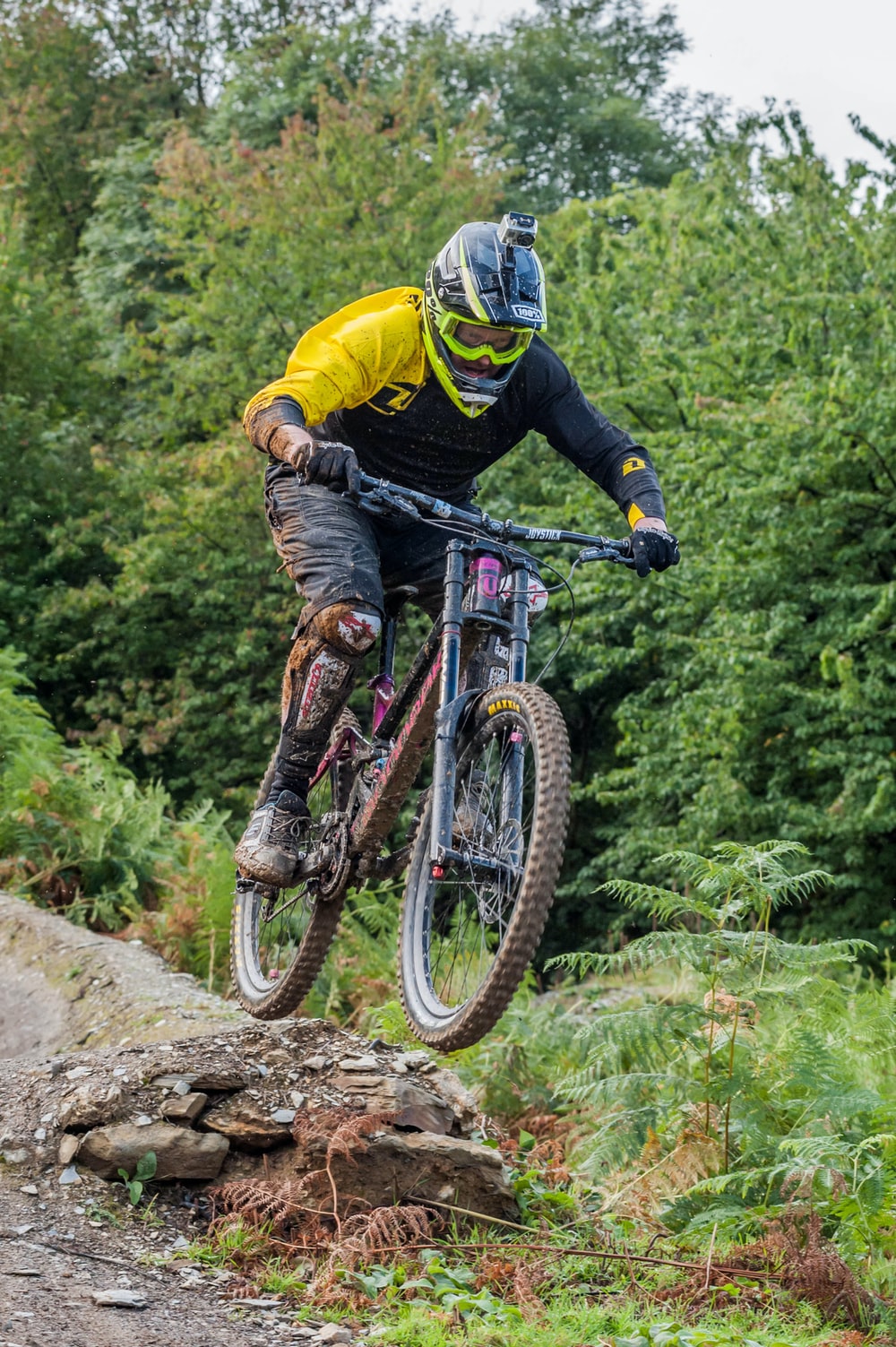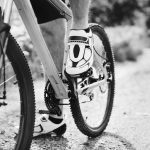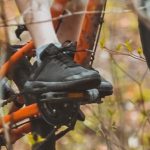Riding a mountain bike can be an exhilarating experience as you cruise over rough trails and challenging terrain. Having the right gear, including shoes, can make mountain biking more efficient and fun. But dedicated mountain bike shoes typically require you to use clipless pedals and cost more than regular sneakers. Are the pros worth the cons? There are good arguments on both sides.
What Are Clipless Pedals?
Clipless pedals connect securely to special cycling shoes using a cleat mechanism. This means your feet stay firmly planted, allowing you to pull up as well as push down with each pedal stroke. Clipless systems transmit power more efficiently from your legs to the bike’s drive train. They also offer better traction and control compared to platform pedals.
The term “clipless” is somewhat misleading. These systems got that name because they do not utilize toe clips and straps like old-fashioned pedals. However, clipless pedals do “clip” your shoes into place.
Mountain bike clipless pedals are designed for rough riding conditions. The pedal bodies are very durable to handle impacts from rocks and crashes. Many models also have aggressive traction pins for grip. The engagement and release tension can be adjusted so they are easier to snap in and out of.
Serious mountain biking typically calls for clipless pedals to maximize power transfer and bike handling. But they do take some getting used to.
Benefits of Mountain Bike Shoes
Wearing mountain bike shoes provides advantages over regular athletic shoes when riding off-road. The stiff soles are designed for optimum power transfer and efficiency. The tread and grip patterns help keep your feet in place when pedaling over loose or bumpy terrain.
Most mountain bike shoes also offer moderate flexibility when walking while still being rigid when pedaling. And the deep, grippy treads provide great traction when hiking or walking in your cycling shoes.
In addition, mountain bike shoes are purpose-built to securely connect to clipless pedal systems. They provide a stable platform with cleats that easily engage and release from the pedals.
The clips hold your feet in the optimal position for generating power. And being attached directly to the pedals allows you to control the bike more precisely with your feet. This leads to better handling, traction, and stability on trails.
Mountain biking shoes allow you to ride faster and more confidently on rugged terrain. But there are some potential negatives as well.
Drawbacks of Mountain Bike Shoes
On the downside, purchasing mountain bike shoes and clipless pedals represents an added expense when getting into cycling. And dealing with the cleat system can take some getting used to for new riders.
Attaching the cleats properly to match your pedals and cycling style takes some trial and error. The connection and release tension also may need adjustment to your personal preferences.
Furthermore, the stiff soles on mountain bike shoes do not make them ideal for casual wear off the bike. And unlike regular athletic shoes, you cannot just hop on your bike with them anytime without having the corresponding pedals.
Carrying extra shoes for pedaling and walking segments is somewhat of a hassle. Needing to twist your foot just right to engage or disengage can be tricky as well, sometimes resulting in falls. And being attached to the pedals limits your ability to quickly put a foot down.
Mountain bike shoes certainly have some drawbacks to weigh against their advantages.
Clips Versus Flats
Another consideration is whether to go with clipless pedals or stick with flat platform pedals. Flat pedals provide more flexibility for riding different bikes or wearing whatever shoes are most convenient.
However, clipless systems offer greater pedaling efficiency and bike control. So they are strongly recommended for dedicated off-road riding.
Ultimately personal preference rules when deciding between flats and clips. Beginning mountain bikers may want to try both options before committing to one style. Pedal choice also may come down to the type of trails you plan to ride most.
Very technical terrain favors flats for quick foot placement changes. Flowy singletrack is better suited for clipped-in power. And clipless shoes perform better for long-distance backcountry rides.
Evaluate your riding style and needs to select the right pedal system. Shoes and pedals work together as important contact points central to mountain biking performance.
Getting the Right Fit
Like all athletic footwear, finding mountain bike shoes that fit properly is crucial for performance and comfort. Be sure to select the right cleat bolt pattern and mounting style to be compatible with your pedals.
Ideally you should shop for cycling shoes at the end of a day when your feet are slightly swollen. Try shoes on while wearing the type of socks you bike in. Your toes should have wiggle room and not feel cramped. Yet your heel should not slip when pulling up sharply on the pedals.
Getting properly fitted mountain bike shoes dialed in takes some work. But it is worth it for optimal power transfer and efficiency on the trail. Proper arch support and foot security also helps prevent soreness or injuries.
If your shoes are too loose or too tight, you will not get the most out of riding with clipless pedals. It pays to try on multiple brands and models to get the best fit. An expert bike shop can help with proper shoe selection and cleat installation.
Are the Costs Justified?
At the end of the day, only you can decide if paying extra for mountain bike shoes is a wise investment for the type of riding you do. Casual cyclists or beginner mountain bikers just starting out certainly can stick to platform pedals and regular shoes.
However, as your skills progress and you log more miles on the trails, using clipless pedals and shoes makes sense. The performance gains and added control off-road riding with mountain bike shoes does offset their costs for most dedicated riders.
Just be sure to budget not only for the shoes, but also for compatible pedals. And factor in extras like cleat bolts and pedal adjustment tools. With some riders eventually needing replacement mountain bike shoes as their old ones wear out over time.
Higher-end mountain bike shoes with carbon fiber soles, lots of traction, and robust construction can cost over $300. Even mid-range models typically run $100-150. So the investment is significant compared to basic sneakers.
But that extra cost brings better power transfer, stability, and connection with the pedals. Exceling at technical mountain biking relies heavily on utilizing quality shoes paired with the best pedals for your needs.
Weigh the Trade-Offs Yourself
In the mountain biking shoe debate, both sides have valid points regarding costs, convenience, and performance. Riding style, skill level, budget, and personal preferences all come into play when deciding: are mountain bike shoes worth it?
There are good arguments for and against using clipless pedals and shoes on the trail. Try both setups yourself to better understand the pros and cons. Analyze your bike handling and compare efficiency, power, comfort, and control.
Test ride flats with running shoes versus clipless pedals and mountain bike shoes. See if you feel held back at all with flats or have trouble connecting and releasing from clipless pedals. Check how your foot fatigue differs at the end of long rides.
Weigh all the variables based on your specific mountain biking needs. Factor in shoe and pedal costs compared to potential gains in skills development. Then utilize whichever option gets you shred-ready in the gear that works best for your ride.
Upgrading to clipless pedals and quality mountain bike shoes represents an investment that typically pays dividends for dedicated riders who hit the trails regularly. But casual mountain bikers or budget-focused beginners can certainly still have plenty of fun on flats too.
In the end, decide what works best for your mountain biking goals and riding style. Analyze all the pros, cons, and costs. Are tricked out shoes needed to shred trails with top technique? Or will any old sneakers get the job done well enough? Let your own needs and performance answer the key question: are mountain bike shoes worth it for the way YOU ride?






